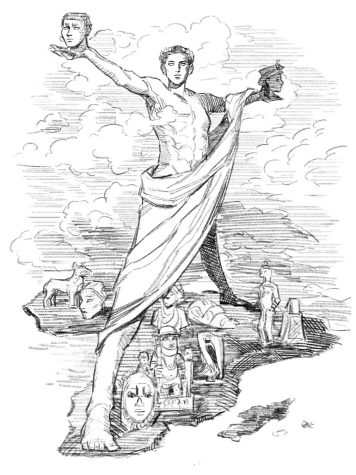What does it take for a CEO to resign?

Art credits to Wanxing Lu!
November 4, 2016
Recently, Wells Fargo, a massive financial institution, came under scrutiny for some mounting misconduct. In an effort to reach quotas and maintain sales targets, thousands of employees illegally opened up fake credit cards and bank accounts in the names of existing customers. This created the façade that the company was doing much better than in reality, an appealing condition for shareholders. Blind-sided, Customers only found out about these accounts when charged with fees much later on. It seems, though, that Wells Fargo will finally be held accountable, for it faces a fine of $185 million from the Consumer Financial Protection Bureau.
Wells Fargo fired about 5,300 employees in different regional banks, who they claim responsible for the fraudulent behavior. However, a multitude of questions remain concerning whether or not high ranking employees knew about the malpractice. Just recently, the congressional committee on financial issues held a hearing to further investigate the matter. Testifying before them, CEO John Stumpf initially defended his decision to give up $41 million in his pay in lieu of resigning. During the hearing, Massachusetts Senator Elizabeth Warren was especially adamant, stating to Mr. Stumpf, “So you haven’t resigned… you haven’t returned a single nickel of your personal earnings…You push the blame to your low-level employees who don’t have the money for a fancy PR firm to defend themselves. It’s gutless leadership.” Facing increasing public pressure, John Stumpf eventually resigned.
Many share Warren’s discontentment with Wells Fargo and large banks in general, which brings Wells Fargo’s fraud into the bigger picture of banking. AP United States Government and Economics teacher, Mrs. Dwyer, wonders, “Who holds Congress accountable for thirty years of deregulation of banks that make it possible for banks to impose burdens on the taxpaying public?”
Following the Great Recession of 2008, a plethora of mostly leftist senators and representatives sought to gain a stronger hold on banks by instituting more regulations. Warren and Senator John McCain, in particular, are pushing for the reinstatement of the Glass-Steagall Act, the 1930s legislation repealed in 1999 by Bill Clinton that separated commercial bank transactions from other firms, prohibiting banks from making risky investments. However, given that financial institutions and political processes are currently so complex, this proves to be a burdensome, if not impossible, task.
Part of the problem of fraud stems from the substantial push from higher level executives at the banks to increase profits. Daanyal Farooqi ’17 states, “This situation is another classic example of banks focusing solely on profit, and their willingness to do anything to get it.”
Through incentive programs promising bonuses proportional to accounts generated, lower level employees feel urged to make fake accounts just to meet certain quotas. Professor Amiram of Columbia University analyzed that, “If the managers are saying, ‘We want growth; we don’t care how you get there,’ what do you expect those employees to do?’” Wells Fargo has since discontinued this program.
Still, customers find themselves in a predicament. One Wells Fargo customer, Shahriar Jabbari, claims in a lawsuit against Wells Fargo that employees created seven fake accounts in his name, causing his credit score to suffer.
Andrea Lan ’18 adds, “My family has an account at Wells Fargo. For sure, I think our confidence in the bank has declined. I wonder what Wells Fargo will do to reinstate trust in their customers and what will be done to make sure this doesn’t happen again.”
The question of financial regulation remains a key controversy.


